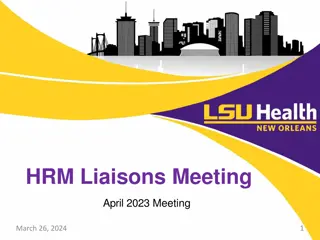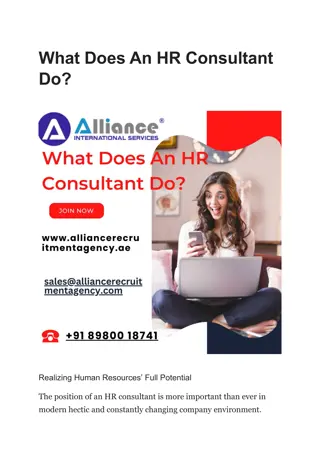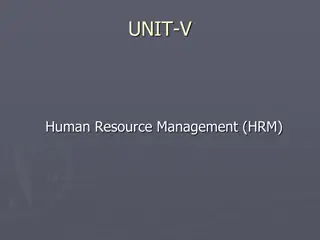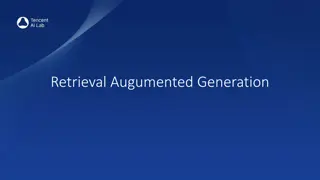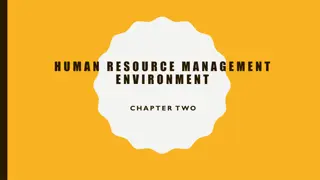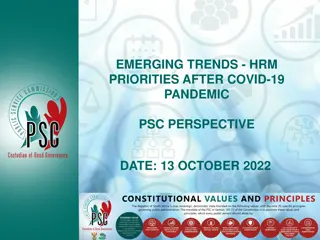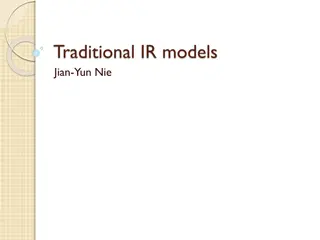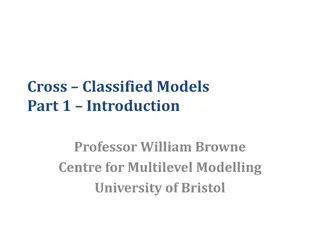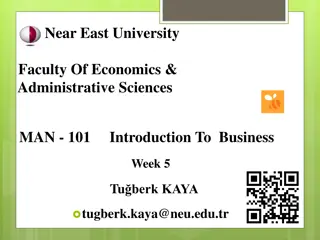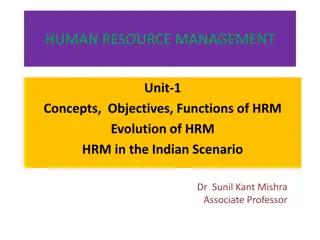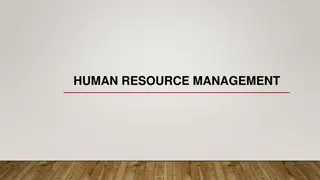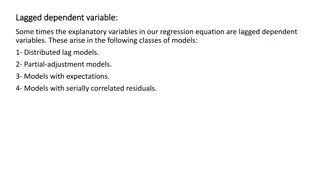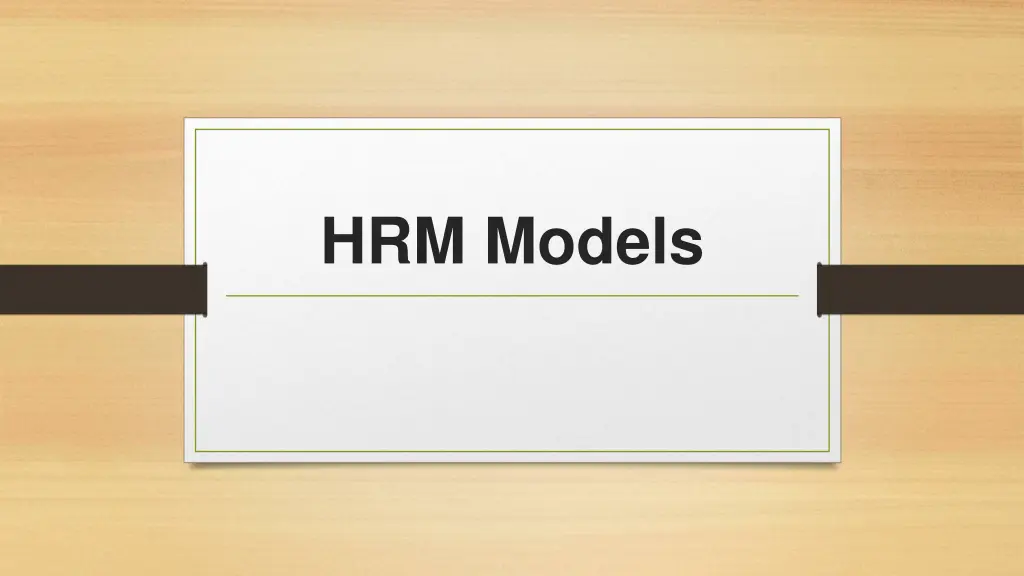
Important HR Models: Standard Causal Model, 8-Box Model, HR Strategy
Explore key HR models including the Standard Causal Model aligning HR with business strategy, the 8-Box Model illustrating external and internal factors, and the HR strategy emphasizing HR practices and outcomes leading to business goals.
Download Presentation

Please find below an Image/Link to download the presentation.
The content on the website is provided AS IS for your information and personal use only. It may not be sold, licensed, or shared on other websites without obtaining consent from the author. If you encounter any issues during the download, it is possible that the publisher has removed the file from their server.
You are allowed to download the files provided on this website for personal or commercial use, subject to the condition that they are used lawfully. All files are the property of their respective owners.
The content on the website is provided AS IS for your information and personal use only. It may not be sold, licensed, or shared on other websites without obtaining consent from the author.
E N D
Presentation Transcript
Some of the important HRM Models: 1. The Standard Causal Model of HRM The best-known HR model is the Standard Causal Model of HRM. The model is derived from many similar models published throughout the 90 s and early 2000 s. The model shows a causal chain that starts with the business strategy and ends, through the HR processes, with (improved) financial performance. The model thus shows how HR activities that are aligned with organizational strategy lead to business performance. According to this model, HR will only be effective if its strategy is aligned with business strategy (in line with the best- fit theory). HR strategy is thus derived from the overall strategy.
2. The 8-box model by Paul Boselie A different HR model that s often used to model what we do in HR, is the 8-box model by Paul Boselie. The 8-box model shows different external and internal factors that influence the effectiveness of what we do in HR. First of all, you see the external general market context, the external population market context, the external general institutional context, and the external population institutional context. These are external forces that influence how we do HR. For example, if there is a shortage of certain skills in the market, this influences how we do our sourcing, recruiting, and hiring, compared to when there s an abundance of qualified workers. The institutional context also changes: legislation impacts the way we work in HR (e.g. the day- to-day impact of HR) while trade unions and work councils limit what we can do.
The HR strategy consists of six parts: Intended HR practices: The intention we have with our recruitment, training, and other practices matters but this model shows it s only a starting point. Actual HR practices: We can have great intentions but the execution of HR practices is a cooperation between HR and the manager. When the manager decides to do things differently, the intention can be nice but the actual practices can be very different. Perceived HR practices: This is how the employee perceives what s going on in the organization. HR and the manager can do their absolute best but if their activities are perceived in a different way than they were intended and actually done, the perception will not mirror the actual HR practices.
HR outcomes: The perceived HR practices (hopefully) lead to certain HR outcomes. These are similar to the ones in the Standard Causal Model of HR, described above. HR outcomes lead to critical HR goals (i.e. cost-effectiveness, flexibility, legitimacy, and so on), which in turn leads to ultimate business goals (i.e. profit, market share, market capitalization all related to the viability of the organization, and other factors that help to build a competitive advantage).
3. The HR value chain The HR value chain is one of the best-known models in HR. It is based on the work of Paauwe and Richardson (1997) and creates a nuance on the models above in regards to how HR operates. According to the HR value chain, everything we do (and measure) in HR can be divided into two categories: HRM activities and HRM outcomes. HRM activities are day-to-day activities, including recruitment, compensation, training, and succession planning. These activities are often measured using HR metrics. These are so-called efficiency metrics. The cheaper we hire and the faster we train, the better. HRM outcomes are the goals we try to achieve with the HRM activities. We recruit, we train, and we compensate to achieve certain goals/ outcomes. These outcomes include employee satisfaction, motivation, retention, and presence.If we just focus on measuring HRM activities, we will automatically focus on reducing costs (i.e. maximizing efficiency). However, we should instead focus on HRM outcomes as this helps to align our processes with our goals.
4. The HR Value Chain Advanced We ve researched a lot of the literature but we can t find an original source for this model. This model is very similar to the HR value chain but with two key differences. First, the organizational performance is defined in the balanced scorecard. The balanced scorecard contains the key performance indicators from a financial perspective, a customer perspective, and a process perspective. These are integrated into the HR value chain. This document helps to align and show the added value of HR to the business. Second, the model starts with a number of HR enablers. These enablers are key for what HR is doing in the business. This includes HR systems, budget, capable professionals, and other key elements. The thinking is that these enablers need to be present in order for the value chain to operate effectively.If HR lacks well-trained professionals, if the budget is low, or if the systems are outdated and hamper innovation, HR will be less efficient in reaching its HR outcomes and business outcomes.
5. The Harvard Framework for HRM The Harvard framework for HRM is an HR model comprised of five components. The model starts, on the left, with stakeholder interest. These stakeholders include shareholders, management, employee groups, government, and more. These interests define the HRM policies. At the same time, situational factors influence these interests. Situational factors include workforce characteristics, unions, and all the other factors that were also listed in the 8-box model. Situational factors and stakeholder interest influence HRM policies. These include the core HR activities, like recruitment, training, and reward systems. When done well, HRM policies lead to positive HRM outcomes. These include the previously mentioned retention, cost-effectiveness, commitment, and competence. These positive HRM outcomes lead to long-term consequences. These can be individual, organizational, and societal. The Harvard framework is an HR model that takes a more holistic approach to HR, including different levels of outcome.

